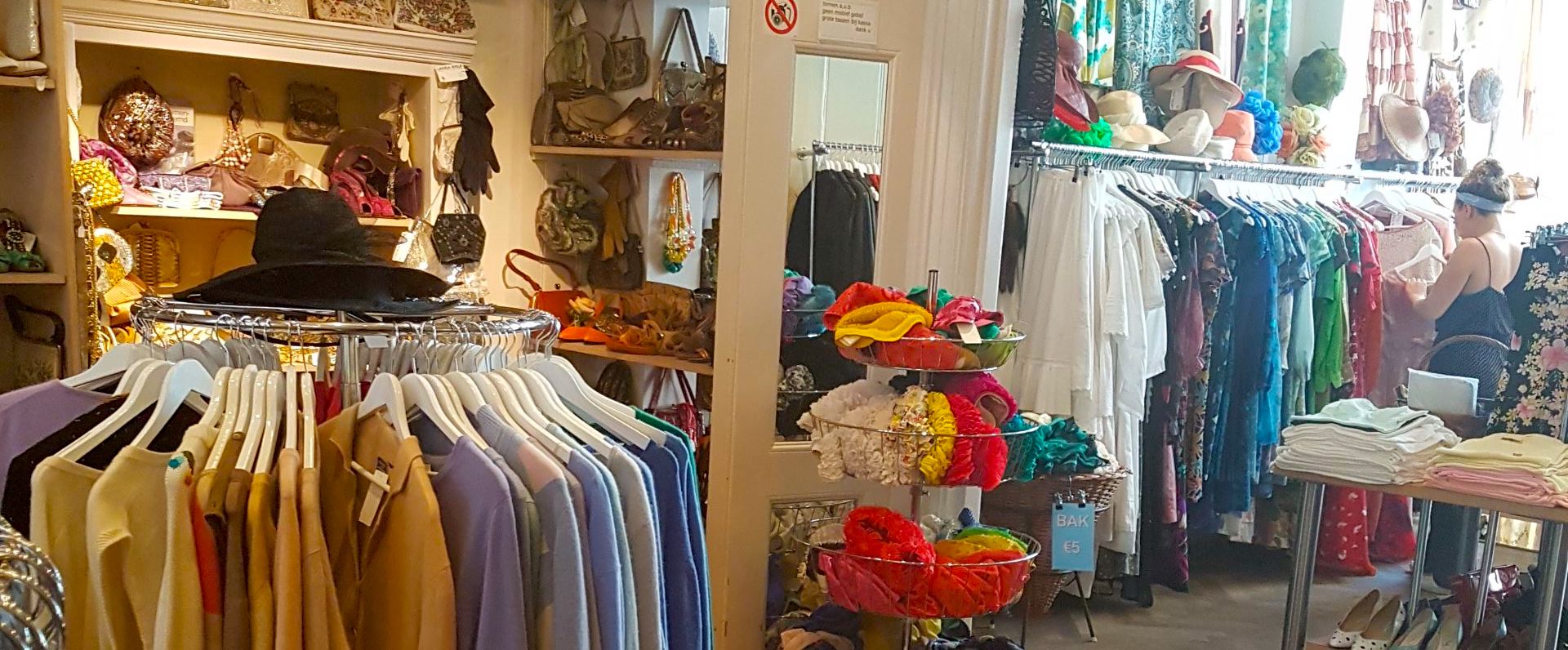
How can we indulge our love of clothing and be eco-conscious?! The answer my friends, is shopping vintage and thrift! With Oxfam’s Second Hand September campaign to resist buying brand new clothes, I thought I’d share some of my tips…
I’ve been shopping vintage and thrift for many years now, from the days of putting together Goth outfits from charity shop finds as a teenager, and more intensively when I started Swing dancing and getting into the vintage scene. The best things about this kind of shopping for me are the opportunities to find unique and colourful items, usually for good prices, and often with better quality fabrics and construction than a lot of contemporary high street clothing.
The old perception of second-hand shops as full of rumpled, smelly garments that are falling apart, simply isn’t the case for the vast majority of stores nowadays. Many vintage stores have beautifully curated collections, but there’s still the opportunity to rummage and feel that sense of satisfaction of finding a real hidden gem! It’s also a learning opportunity, as these shops are little windows into the lifestyles of people in the past.
Most importantly though, we can all contribute to making a positive change for the environment and society by buying fewer “fast-fashion” items. According to research from Oxfam, over two tonnes of new clothing is purchased in the UK every minute, which produces almost 50 tonnes of carbon emissions- the same as driving 162,000 miles in a car. The impact of the production cycle of a single pair of jeans and a t-shirt is estimated at 20,000 litres of water. It would take 13 years to drink this volume! These clothes aren’t even well-loved, with 11 million items going to UK landfill every week. It’s clearly time to dump fast-fashion and buy into some quality second-hand garments.
I started out just wearing the odd piece on the weekends, but now that I’ve become more efficient at shopping, altering, and putting outfits together, most days I’ll be wearing something second hand, including when working in a corporate office. Hopefully, these five tips will encourage you to give it a go, not just for September but as a lifestyle choice.
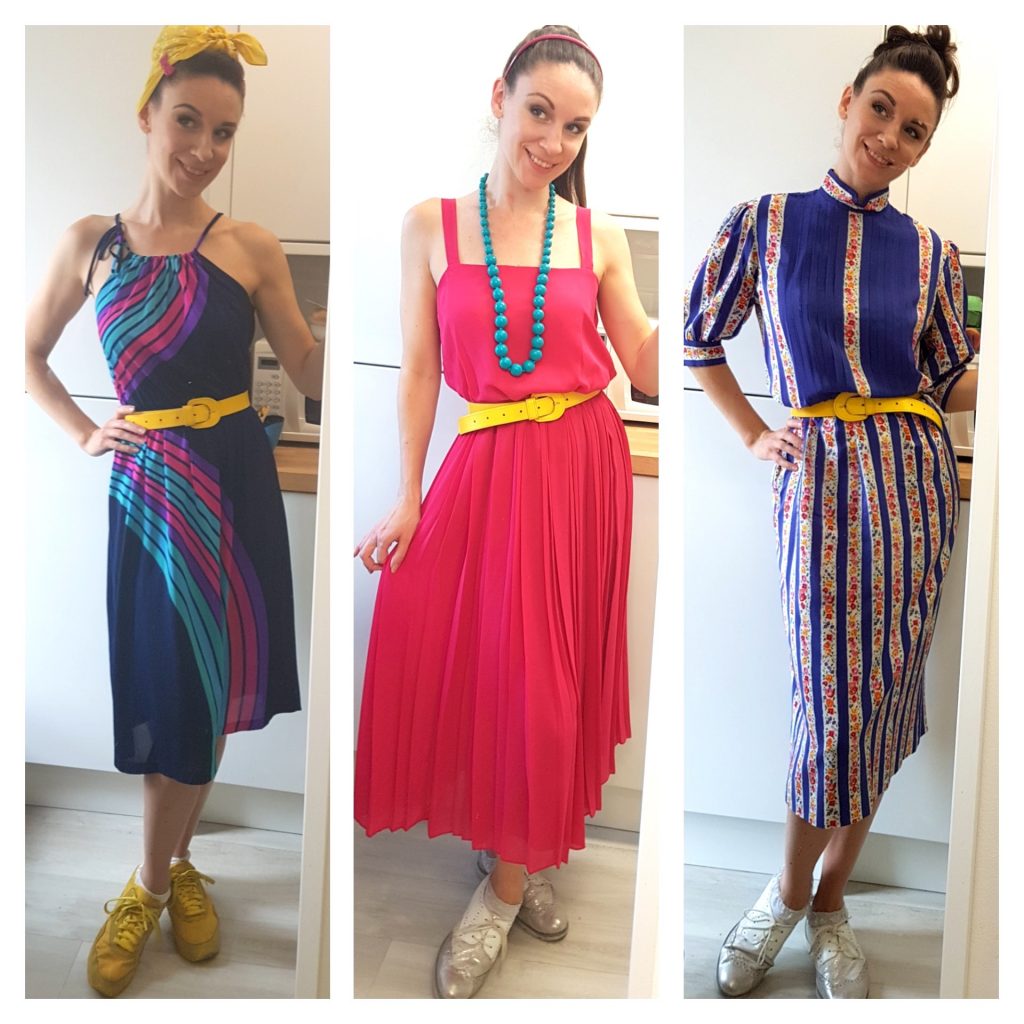
Some of my favourite second hand dresses and accessories
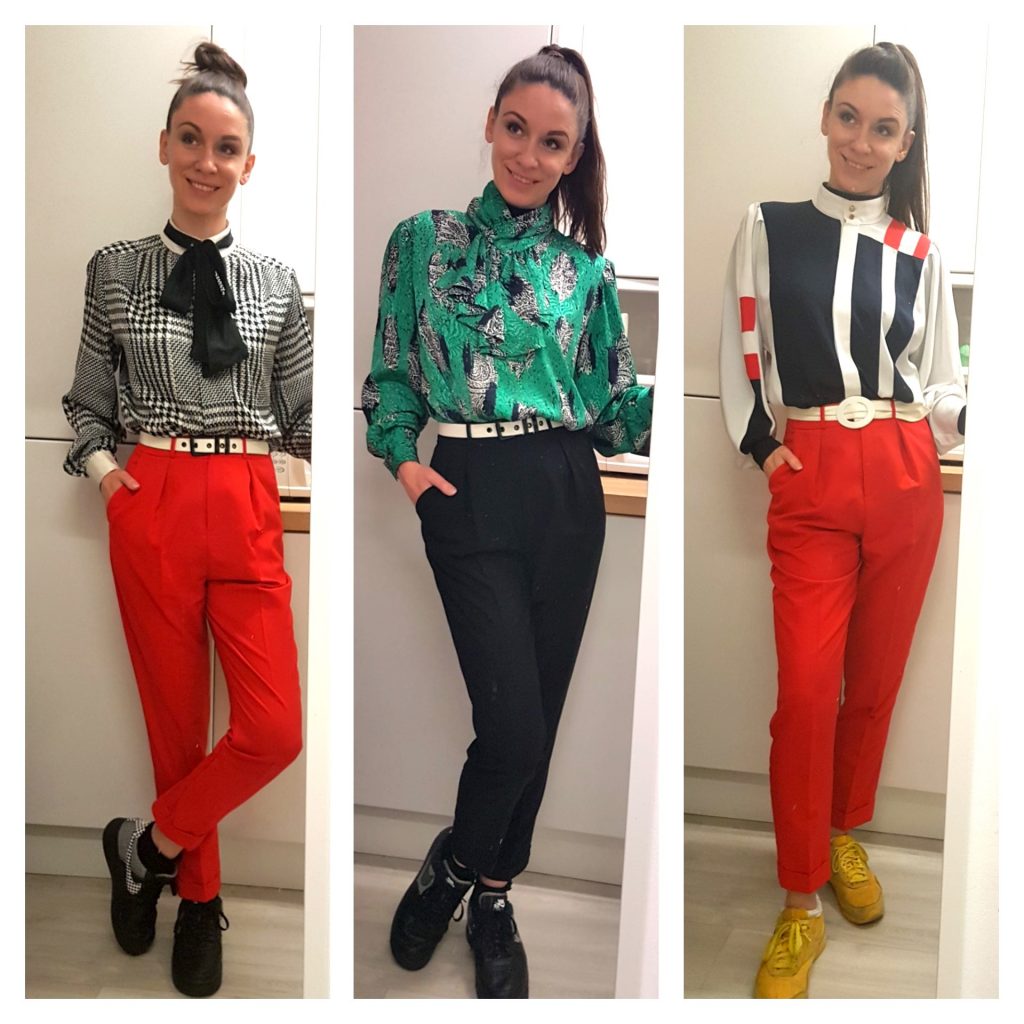
Office-appropriate: all three shirts are second hand, as are the yellow trainers and white belt in pic 3
1. Before you shop: adopt an attitude of discovery
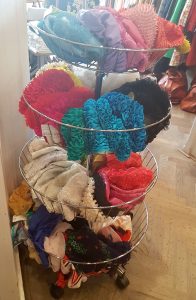
You never know what you’ll find: I discovered this large selection of swimming caps in Laura Dols in Amsterdam!
It can be challenging to shop second hand if you’re after something very specific, like a yellow pair of trousers with a straight leg, for example. It is possible to find these things, but you’ll need to dedicate quite a bit more time and visit a few different stores to find it. It’s much easier (and more fun!) to shop thrift/vintage with an attitude of discovery. I find what I find, and that may include off-season stuff that I will pop in the back of my wardrobe and might not wear for a couple of months until the weather changes.
I do set limits though. From experience, it’s easy to end up with a shed load (literally!) of summer dresses as these are abundant in supply and the sizes are forgiving. I now set little rules for myself: currently, I’m not allowed to buy any more dresses, and I need items in plain colours only, no crazy patterns. Think about what you might need as gaps in your current wardrobe and perhaps have some loose criteria to guide your choices, but then run wild!
2. How to find stuff: pick what jumps out
It can be overwhelming at first and it was something that definitely put me off initially. If you’re anything like me, you might be used to TopShop and ASOS, with everything in garment categories, sizes, and even collections of colour coordinated things. In this brave new world, you’ll be thrust into what can appear to be quite frankly, utter chaos! While things are usually broken out by garment type, there are rails of different sizes, colours, and eras all smushed together. Some things are even in cardboard boxes!
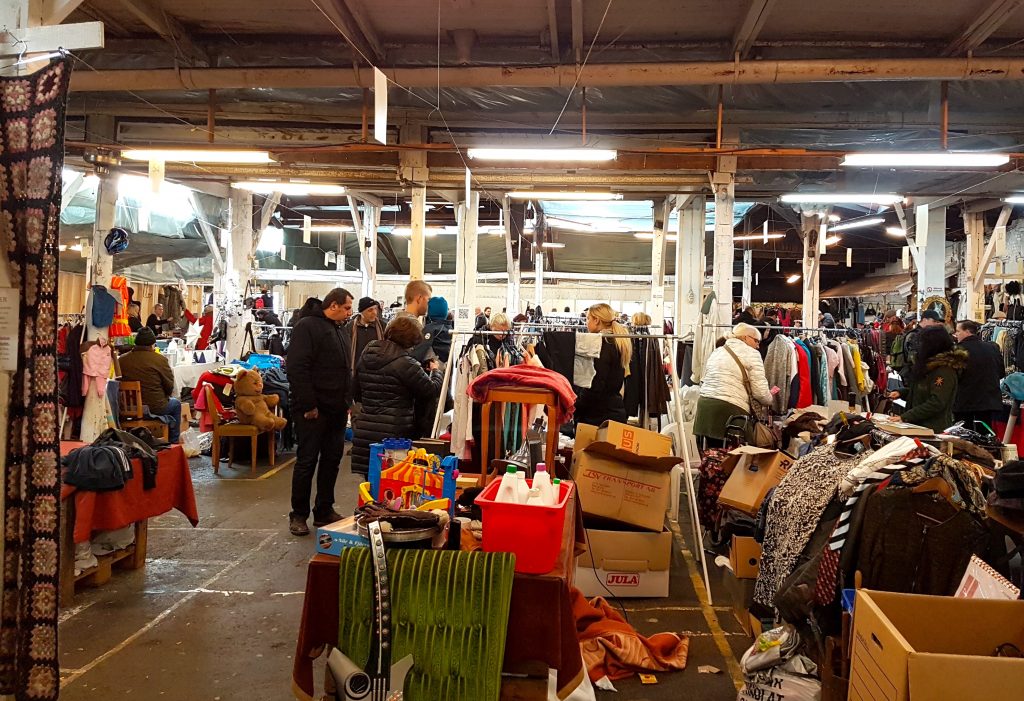
The stereotype of second hand shopping- scary chaos at first, fun rummage challenge for the more advanced! (Thrift shopping at a market in Gothenburg, Sweden)
I find that sensory overload can be avoided by focussing on one rail at a time...
Fear not though: I find that sensory overload can be avoided by focussing on one rail at a time. I then simply scan the rail and look for colours or fabric patterns that stand out and appeal to me or garments that I’ve identified as “need-gaps” in my wardrobe.
Once I’m intrigued by something, I’ll pull out the garment from the rail and take a look at the cut and see if it’s interesting to me. I love unusual lines, proportions, and details like embroidery and buttons- for me, these little things are what makes buying vintage, in particular, so much fun!
3. How to edit your choices: style, fabric, and condition assessment
One of the potential risks of second-hand shopping is ending up looking like you’re going to a fancy dress party. Personally, I have no issue with this (read: “no shame”!), but I can understand why it might not be for everyone. The trick is to do a bit of crafty editing. For example, I have a preference to avoid shirts from the 1970s with the oversized collars, as I think this detail dates them and I’d usually want to wear these items for work. I’d also avoid anything from the 80s with built-up shoulders (that I can’t remove- see later!) as I’m broad on the top, so it isn’t flattering. This is just a style thing that each person will have different ideas about. Experiment and see what you’re comfortable with.
Secondly, we’re very lucky to live in an age of breathable and technical fabrics, but quite a lot of mid-century synthetic fabrics aren’t so forgiving… basically, they can end up not smelling great when in contact with your skin on a hot day! If I like something from the 60s for example, in perspiration-inducing nylon, I’ll think: if the cut is sleeveless, it’ll probably be OK, and if not, I’ll think if I can wear a layer underneath. This is easy for shirts and some long-sleeved dresses; I pop a long base layer underneath for extra warmth and non-stink factor in winter, or a short-sleeved, quick-drying version under 80s dresses in the summer.
Finally, I’ll check the condition. A seam can be easily fixed with a quick running stitch, but bigger things like a large rip, a dark stain on a silk fabric, or a broken zip can be more challenging to fix on your own.
4. Trying on: size doesn’t (usually) matter
This is the fun bit!! Do me a favour: if you find something you love but it seems massive or a bit on the small side, give it a try on anyway! There are ways to expand a sleeve or waistline, if necessary, or pop it to a tailor. A strap can easily be shortened, a bust line can be taken in on a dress (usually my thing), and trousers, dresses and skirts can be shortened easily (even using iron-on tape so no need for any sewing!). Usually too big is easier to fix than too small though.
my biggest tip is to wear a belt and/or separates when you go vintage and thrift shopping…
Probably my biggest tip is to wear a belt and/or separates when you go vintage and thrift shopping. This will allow you to see if a dress looks good with a belt, whether a shirt looks good tucked in, or see what a skirt’s waistline looks like with a top.
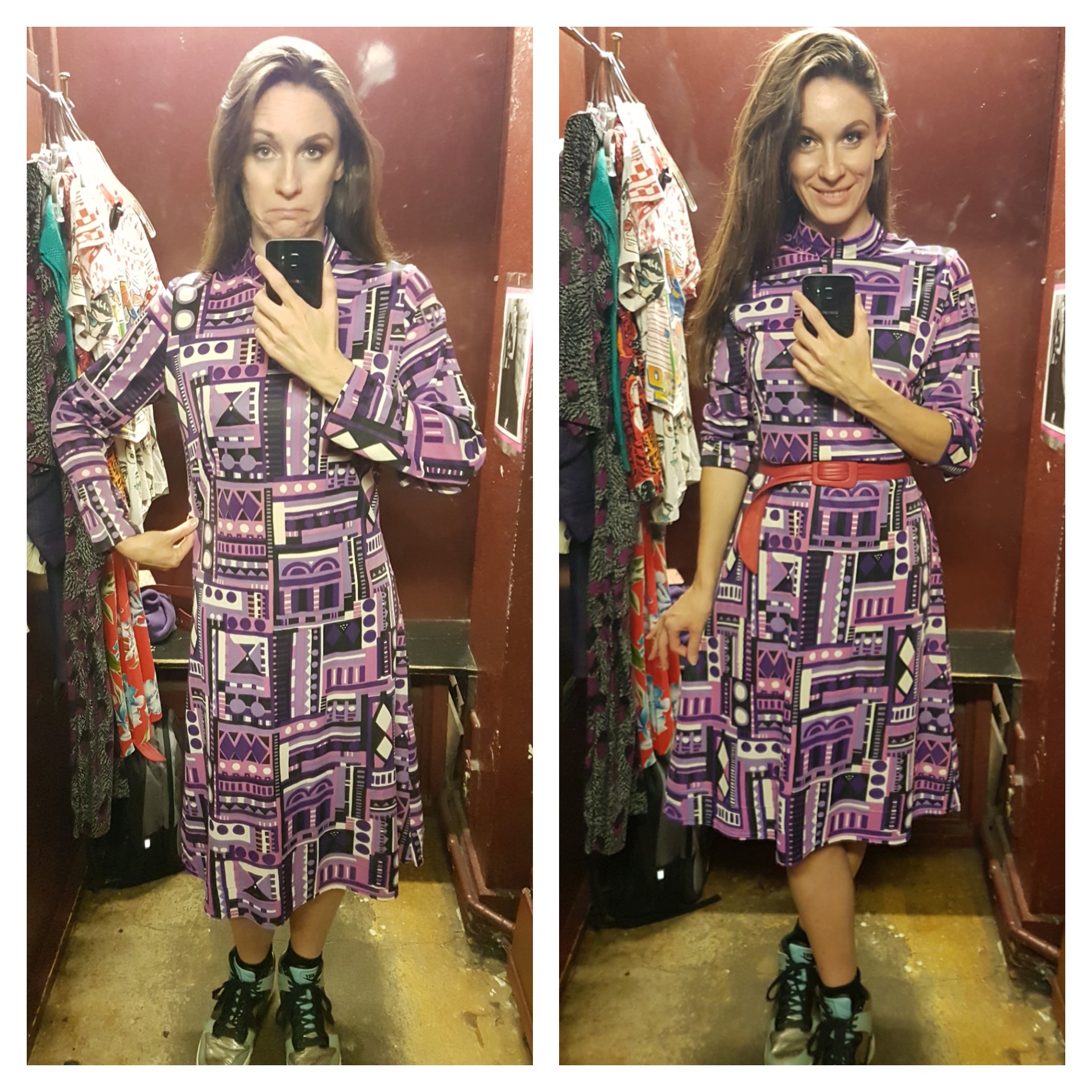
The benefits of adding a belt!
Then, have a look from a few different angles and even try it on backwards. I have a dress that I was about to reject due to a neckline I didn’t like, then I flipped it so the buttons came up the front, and hey presto: awesome dress for me!
5. When you get home: give your garments some simple TLC
Get good at ironing! Your lovely goodies will likely be in need of an iron to look their best. Some of the better vintage shops that have curated collections will steam clean and steam iron all their clothing, so I don’t usually wash them before wearing. I will though, often wash thifted beauties to give them a spruce up, carefully reading the instructions and pretty much never tumble drying them just in case of melting issues. I’ve found that most of my 80s things are usually safe in a 30 wash, so don’t be too scared.
don’t fear the 1980s shoulder pad…
Finally, you might want to make some minor alterations as discussed above. Another key tip from me here is: don’t fear the 1980s shoulder pad! They are usually held on by a couple of stitches on each side and can be snipped off. If they’re in the lining of a jacket, try unpacking the shoulder seam, removing the pads, then stitching up the seam with small stitches.
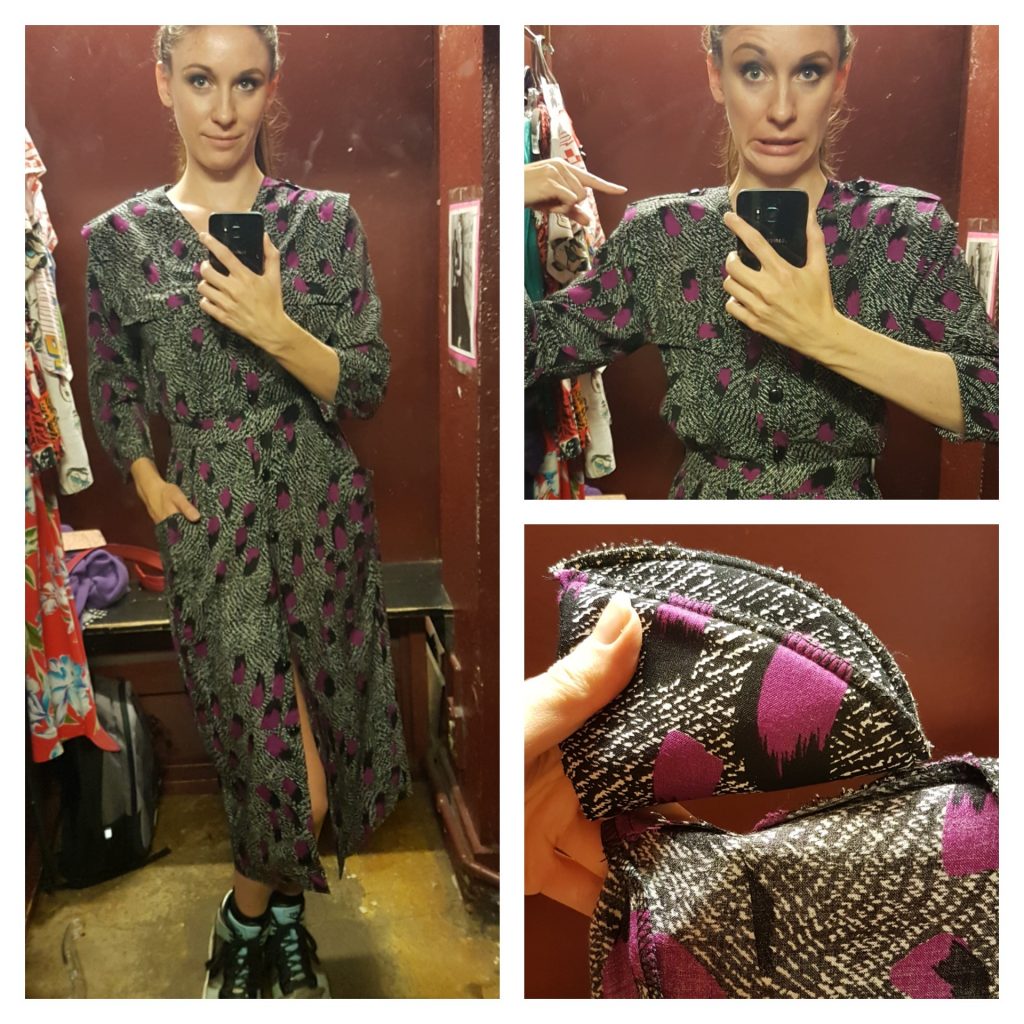 Don’t fear the 1980s shoulder pad! – They are often easily removable!
Don’t fear the 1980s shoulder pad! – They are often easily removable!
Some final, quick-fire tips:
- Wrap over skirts held together with buttons are easy to take in or let out. Just search on YouTube for a tutorial on how to sew on a button.
- Full skirts can be pegged in to reduce the waist and the fullness hides the adjustment.
- A large shirt can be tucked in, so go for it if it’s not too large on the shoulders.
- Who cares about gender! I was recently shopping with a straight male friend who bought a pair of vintage women’s stretch jeans as they fit great and he liked them. I have also bought several men’s shirts and of course, ties!
- Accessories usually don’t have sizes and are a great way to add individuality to an outfit- as my super stylish and wise friend Marianne reminded me- “throw on a vintage scarf and your outfit will never be boring!“.
-
Some essential bits of kit to take care of your second-hand items:
- A decent iron
- Box of pins
- Iron-on hem tape (for speedy, non-stitch adjustments to trouser lengths)
- Seam undoer doohickey
- Good pair of fabric scissors (don’t use them on paper!)
- Measuring tape
- Selection of coloured threads for blending in any adjustments
- Sewing needles
- Spare buttons
- Belts to coordinate and draw together your outfits
Now you’re armed with some insider tips to launch you on your way to exploring the exciting yet sustainable world of second-hand clothing. Get rummaging in those boxes, trying on those “might fit” items, and go in armed with a belt and an attitude of discovery!
Thanks for reading! Hit Follow to receive little notes letting you know that I’ve posted a new article, and in the meantime, check out the Instagram and YouTube channels for more (Un)Popular content!